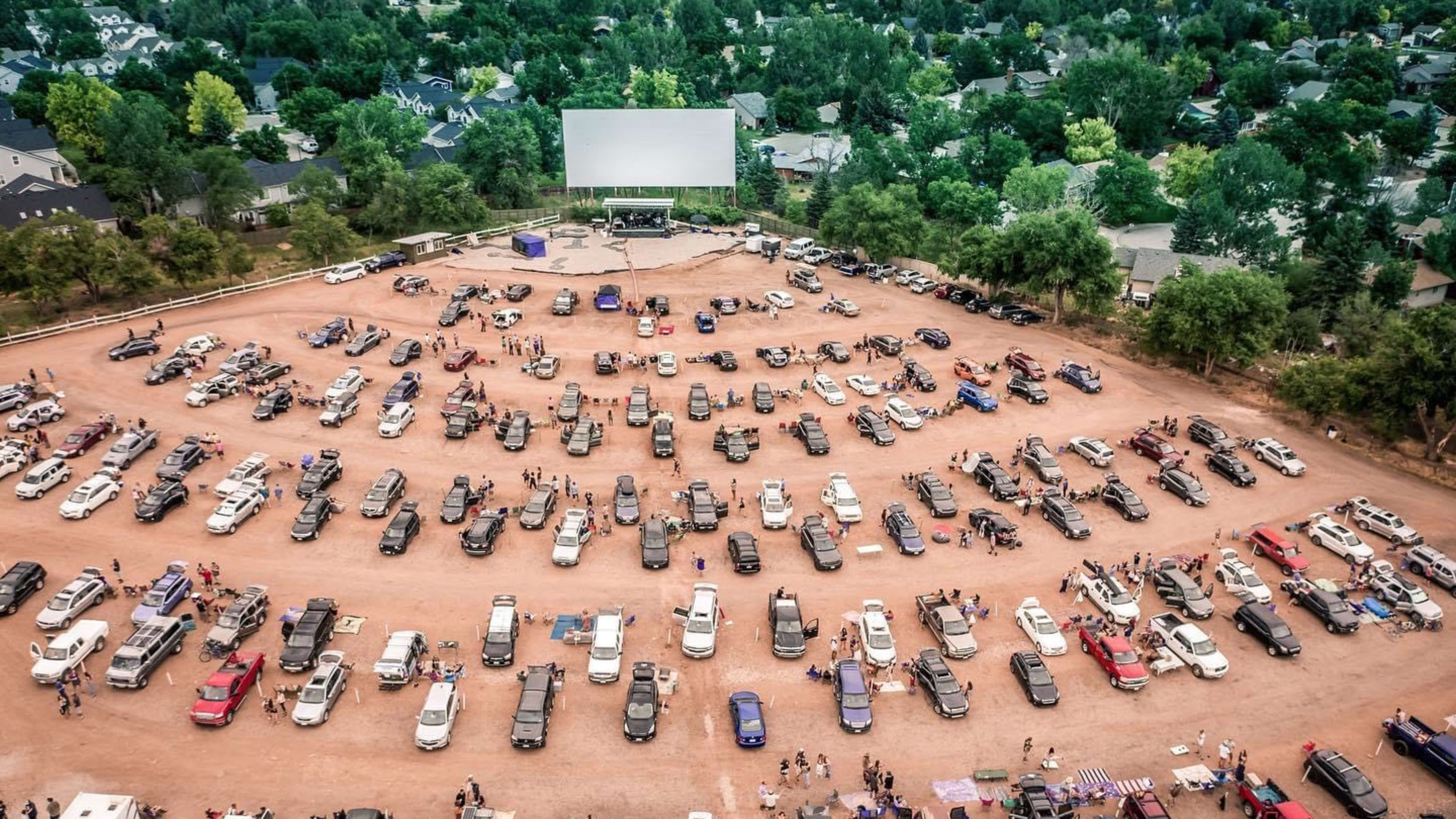Last month, fans flocked to see the Denver jam band Magic Beans and other artists at a two-night music festival in Fort Collins, Colorado.
While that might sound out of place in the time of coronavirus, the event organizers with the Magic Beans-affiliated Beanstalk Music and Mountains Festival took pains to keep fans safe and socially distanced. The key element: Making this iteration of the annual festival a drive-in one, hosted at the Holiday Twin Drive-In Movie Theater, with audience members required to stay in or near their cars, parked in every other space in the venue. Performances were shown on screen and visible on stage, while audio was broadcast to FM radios and smartphone apps, so the festival’s nearly 400 cars’ worth of attendees could listen through the radios in their vehicles, their phones, or portable boom boxes.
“The production angle went very smoothly,” says festival co-owner and CEO Scott Hachey, who is also the guitarist of Magic Beans. “The social distancing aspect went very well as well, and we were excited with how our fans stuck next to their cars most of the time.”

Mark A. FoxIf people are going to be concerned about pandemics on an ongoing basis, it’s probably going to be great for drive-ins.”
Drive-in events that have popped up amid the pandemic include everything from concerts and movie screenings to fitness classes and drag and cabaret performances. Some of the roughly 300 drive-in movie theaters around the country have recently hosted events like church services and high school graduations, says Mark A. Fox, a professor at Indiana University South Bend who has written about drive-ins in the past and is currently working on a paper about their policies for adapting to COVID-19. Drive-in events amid coronavirus aren’t just local: Country superstar Garth Brooks even streamed a recent concert to audiences at hundreds of drive-in theaters across the country.
“If people are going to be concerned about pandemics on an ongoing basis, it’s probably going to be great for drive-ins,” Fox says.
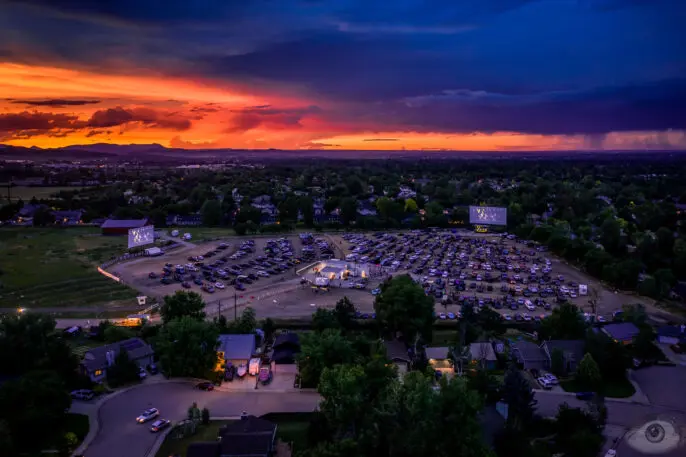
“We were just like, hey, we have a huge parking lot,” he says. “Three days later we had our first drive-in movie.”
Even Walmart recently announced that it’s opening temporary “contact-free drive-in movie theaters” in 160 of its parking lots around the country.
“The interesting thing about the sort of drive-in concept is you don’t actually need a drive-in movie theater to be able to deliver on it,” says Tamara Mendelsohn, chief marketing officer at Eventbrite. “Really all you need is sort of designated parking spaces.”
Dodging polio and coronavirus at the drive-in
Drive-in movie theaters have existed since at least the 1930s, but they’re typically associated with the 1950s, when thousands of them sprouted up around the country, especially in rural areas and fast-growing postwar suburbs. While in popular culture they’re often associated with teen hijinks and sexuality—the indie pop band Passion Pit takes its name from one alliterative nickname for drive-ins, similar in idea to lovers’ lanes—they were also a hit with postwar parents looking for a cozy night out with their young baby boomers. Many drive-ins offered family-friendly amenities like playgrounds to entertain (and exhaust) younger children, bottle-warming services for those feeding infants, and even on-site laundry facilities so moviegoers could drive home with clean clothes and linens.
Part of the allure of midcentury drive-ins was the relative privacy they offered within people’s cars. Advertisements emphasized that audiences didn’t need to dress to impress, as they might if they anticipated being spotted by neighbors at a traditional cinema. “This was a time when people would get dressed up to go to the picture palace,” says Mary Morley Cohen, who has written an oft-cited paper about the peak era of drive-ins. Visitors appreciated that neither playful or even snoring children, nor adult activities like cigarette smoking and romance, would disturb other patrons.
Some ads also emphasized the accessibility of drive-ins to people who couldn’t physically walk through a traditional theater or sit comfortably in theater seats. In some cases, drive-ins even offered a more welcoming experience for Black moviegoers during a time of segregation, although a scholarly article from last year by University of Leicester associate professor Guy Barefoot makes it clear that varied from theater to theater.
Even in the 1950s, drive-ins sometimes promoted themselves as less likely to spread communicable disease: The Press-Telegram in Long Beach, California, points to a 1951 ad that told audiences they would “be flu and polio protected” at a new drive-in. But historically, drive-ins boasted plenty of features that would likely make an epidemiologist from 2020 turn pale.
“Another attraction of the drive-in was the opportunity to meet and play with other spectators,” wrote Cohen, who is now an associate dean at the University of Chicago, in her 1994 paper. “The [chain] Reade Theaters’ potato sack and three-legged races, for example, encouraged both bodily and social contact among the audience.”
Online at the drive-in
During the pandemic, drive-ins are using today’s technology to enable both social and commercial interactions without physical contact. Eventbrite and other ticketing companies let audiences display their tickets on their phones for scanning, meaning there’s no need for attendees to come in contact with those at the gates. And many drive-in events, including the Beanstalk fest, let visitors buy food by ordering with a smartphone app. Then, they can quickly come to the concession stand when their items are ready and not have to wait in line or interact much with other customers.
Similarly, at the Bel Aire, customers can use the diner’s app or website to order food for pickup or even carhop-style delivery to their cars. The diner also plans to host a drive-in trivia event, where teams will be able to compete against other cars by answering questions through their phones, says Dellaportas. And at some drive-in bingo events around the country, players are encouraged to use their cars themselves to shout out “bingo,” honking their horns and flashing their lights when their cards win.
Localized FM radio broadcasts to cars have largely replaced the rickety speakers that moviegoers once pulled in through their windows to hear movie audio, meaning one less item to worry about sanitizing and less noise for surrounding neighborhoods. While FM radio, which offers better sound quality than AM, doesn’t seem like such a novel technology today, it wasn’t widely installed in cars until the 1960s: There’s a reason pole-mounted speakers are shown in the drive-in theater scene in the movie version of 1950s-set musical Grease.
https://www.youtube.com/watch?v=XAcnP62uuXA&feature=youtu.be&t=27
“One of the eeriest things about the actual drive-in is how quiet it is,” says Dellaportas.
In fact, the music at the Beanstalk festival was scarcely audible at all without a radio, since the festival organizers didn’t want to disturb the surrounding neighborhood. Musicians on stage heard their own sound through in-ear monitors, not full-scale speakers, and even percussionists played an electronic drum set with nylon pads that recreated their sound electronically for the on-site broadcast.
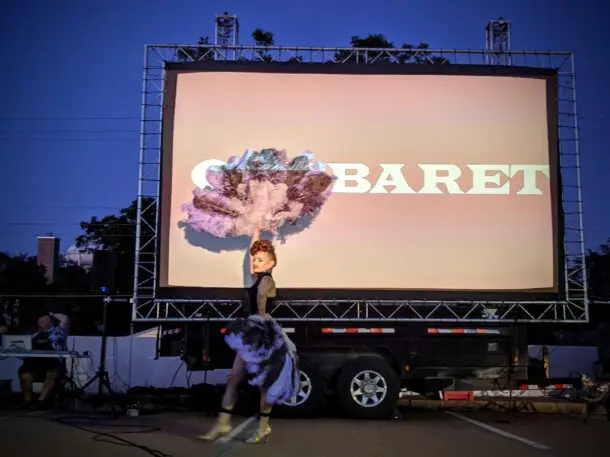
Enjoying a cabaret from the car
Some venues have also found clever ways to integrate audience participation and a wide assortment of artistic performances. It’s not unlike classic drive-ins, which Cohen wrote often accompanied movies with events like “dare-devil car rides, circus acts, high-tower dives” and fireworks. Reid Robinson, who recently opened a bar and restaurant in Richardson, Texas, says he got the idea to turn the shuttered space’s parking lot into a drive-in performance space now called the Carbaret after visiting Keller’s Hamburgers, a Dallas-area drive-in dining institution.
Reid RobinsonI hate using the word pivot, but it’s what it’s been.”
“I hate using the word pivot, but it’s what it’s been,” he says.
The pop-up spot has shown movies, but usually with an added twist: A burlesque troupe did a zombie-inspired dance before Night of the Living Dead, for example, while a screening of Alfred Hitchcock’s The Birds featured period music from musician and radio host Chad Stockslager as well as an avian-inspired dance by burlesque performer Vivienne Vermuth.
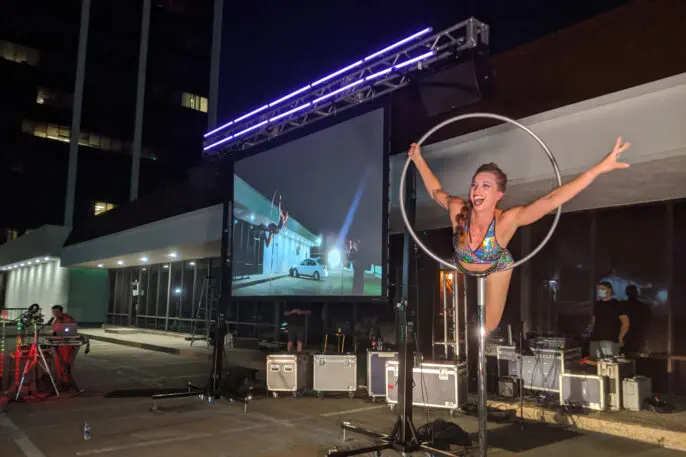
Beyond the appeal of being in a crowd with some social distancing in play, nostalgia likely also plays a role in the new interest in drive-ins. It’s likely no coincidence that top movies at the Bel Aire Diner are Grease and Dirty Dancing, both now-classic period pieces set in the golden age of drive-ins.
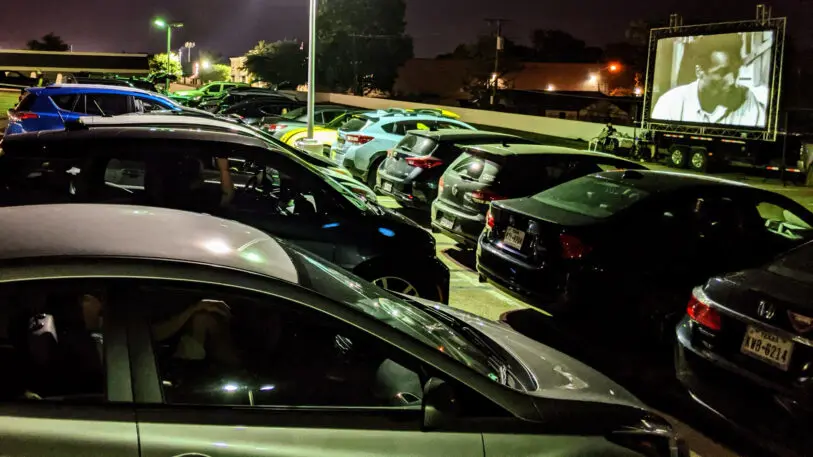
How drive-ins old and new will fare as things slowly return to normal is, like so much about the coronavirus pandemic, uncertain. Many of the drive-in theaters saw their land repurposed for later trends in suburban development like shopping malls. It’s likely that some of the new pop-ups will see their space converted back into traditional parking and some of the old guard will continue to fall by the wayside. But at least some organizing the new theaters say they have no plans to stop the shows even when indoor venues reopen.
“Why not?” asks Dellaportas. “It’s another revenue stream, which is always important for any business.”
Recognize your brand’s excellence by applying to this year’s Brands That Matter Awards before the early-rate deadline, May 3.
